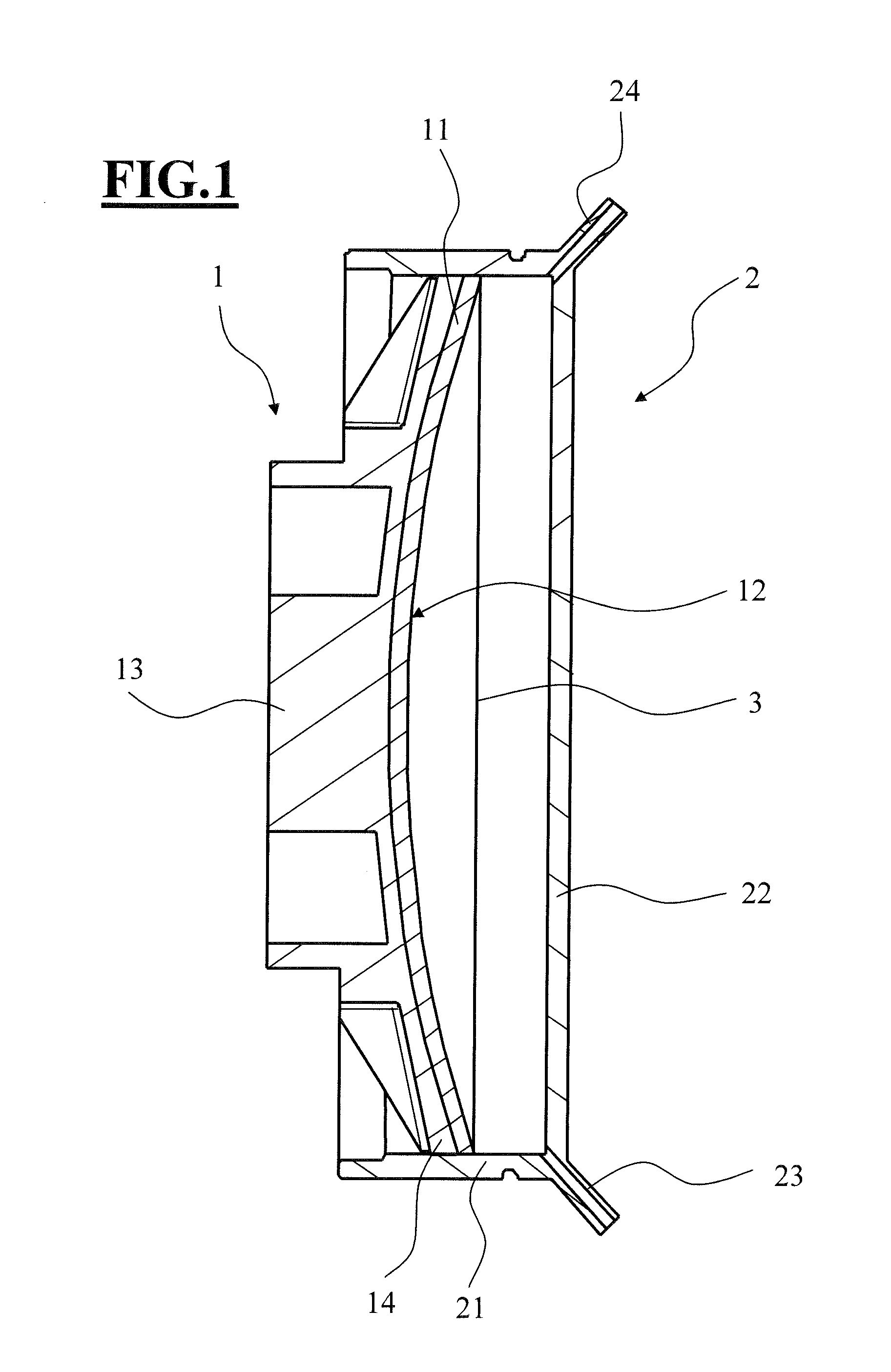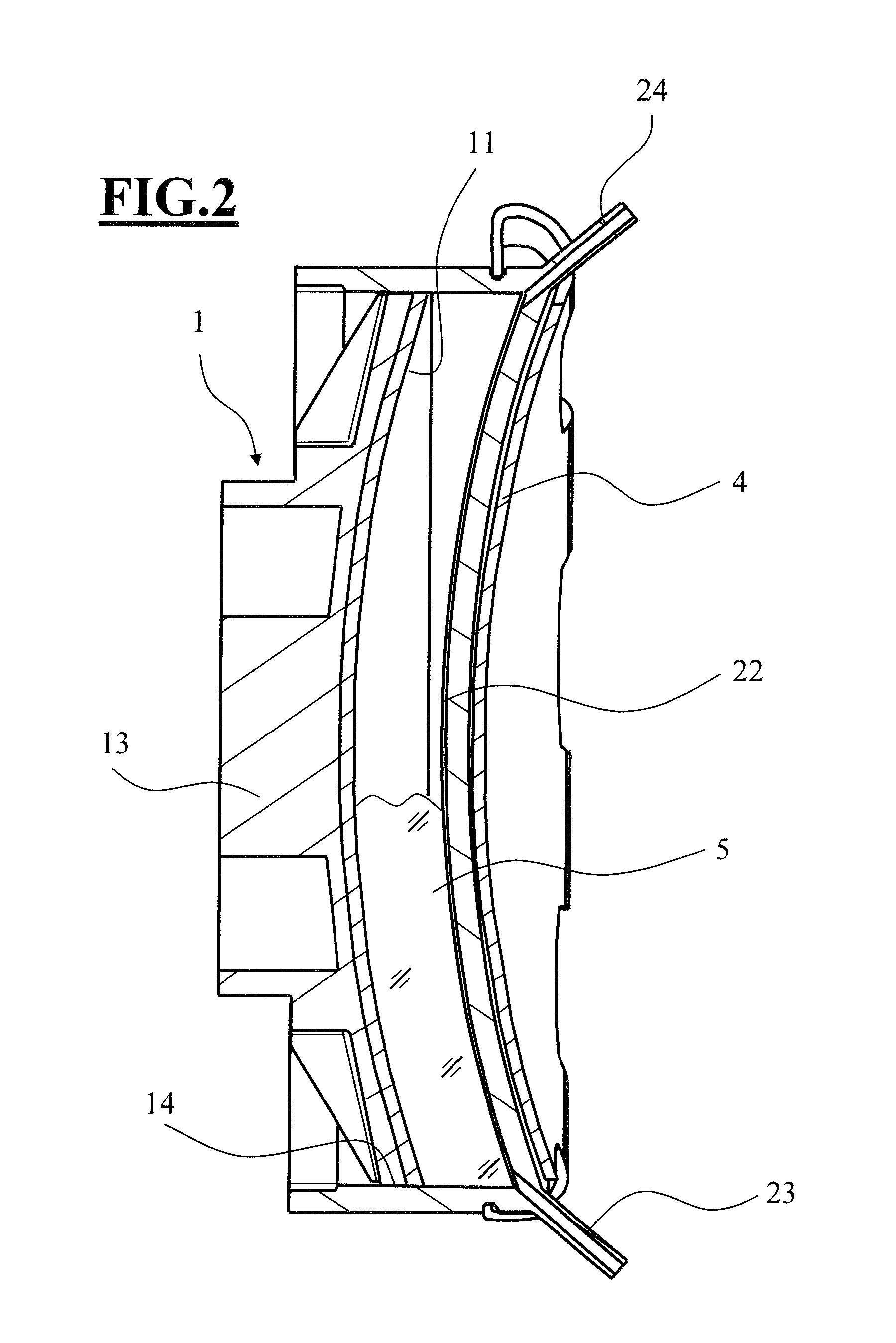Method of making a spectacle lens
a technology of spectacle lens and moulding method, which is applied in the field of moulding for producing spectacle lens, can solve the problems of inability to recycle this material, large blockage of the blank surface area, and high cost of heavy metal alloys used, and achieve the effect of improving the adhesion to the material
- Summary
- Abstract
- Description
- Claims
- Application Information
AI Technical Summary
Benefits of technology
Problems solved by technology
Method used
Image
Examples
Embodiment Construction
[0066]FIG. 1 shows, in cross section, a mold 1 inserted into a sealing ring 2.
[0067]The mold 1 has a mold shell 11, which has a mold surface, or optical surface 12, designed for casting a blank. In the illustrative embodiment shown, this optical surface 12 is concave; it can, for example, be a spherical surface or a rotationally symmetrical aspherical surface.
[0068]The mold 1 and in particular the mold shell 11 with the optical surface 12 are produced by 3D printing. The optical surface 12 has a shape and surface condition which, during the casting process, define a surface of a spectacle lens which, without further working, has a sufficient optical quality. By production by 3D printing, this surface can in particular be adapted individually to the intended user and, for example, can already have prescription values.
[0069]The mold 1 has a block piece 13 which serves to connect the mold 1, and a blank cast thereon, to machining tools for further working of the blank to give the finis...
PUM
| Property | Measurement | Unit |
|---|---|---|
| heights | aaaaa | aaaaa |
| thicknesses | aaaaa | aaaaa |
| thicknesses | aaaaa | aaaaa |
Abstract
Description
Claims
Application Information
 Login to View More
Login to View More - R&D
- Intellectual Property
- Life Sciences
- Materials
- Tech Scout
- Unparalleled Data Quality
- Higher Quality Content
- 60% Fewer Hallucinations
Browse by: Latest US Patents, China's latest patents, Technical Efficacy Thesaurus, Application Domain, Technology Topic, Popular Technical Reports.
© 2025 PatSnap. All rights reserved.Legal|Privacy policy|Modern Slavery Act Transparency Statement|Sitemap|About US| Contact US: help@patsnap.com



